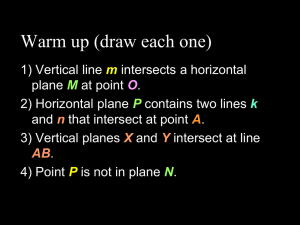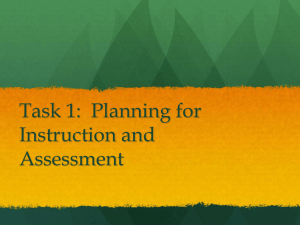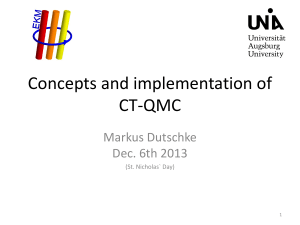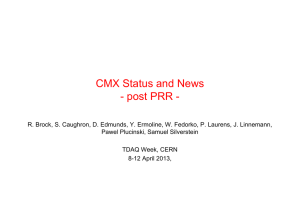408L(2)_TBCM-FBD
advertisement
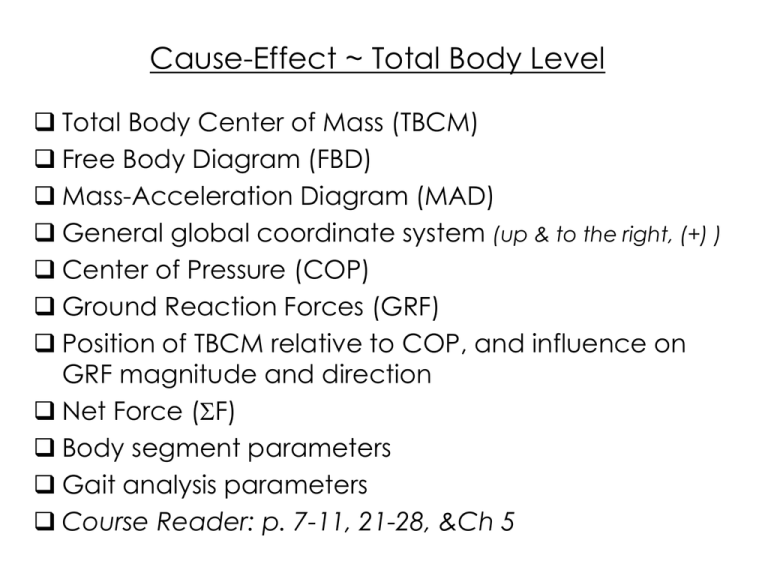
Cause-Effect ~ Total Body Level Total Body Center of Mass (TBCM) Free Body Diagram (FBD) Mass-Acceleration Diagram (MAD) General global coordinate system (up & to the right, (+) ) Center of Pressure (COP) Ground Reaction Forces (GRF) Position of TBCM relative to COP, and influence on GRF magnitude and direction Net Force (F) Body segment parameters Gait analysis parameters Course Reader: p. 7-11, 21-28, &Ch 5 Total Body Center of Mass (TBCM) • Balance point of an object • Center of an object of uniform density • Position is dependent upon relative mass distribution & segment orientation • Can be located outside the body • During human gait, estimated to be around the hip/pelvis & between base of support (M-L) • Position is controlled relative to COP to change the orientation of GRF - dependent upon the mechanical objective of the task QuickTime™ and a TIFF (Uncompressed) decompressor are needed to see this picture. Glut Max SM/ST ground Draw the FBD for: a) Forces acting on the runner b) Forces acting on the ground F h = m*ah F v = m*av Free Body Diagram (FBD) Mass Acceleration Diagram (MAD) mav mah BW Fh Fv Global Coordinate System TBCM location is determined by the relative mass distribution and segment orientation CMx Foot CMx CMx Foot CMx Note any between-athlete differences in: • stance thigh angle; • swing leg position; • trunk orientation; • arm swing position; that may contribute to the noted difference in CM position relative to COP. Each Dive Can Be Separated Into Phases, Each with it’s Own Goal Loading Tipping Pushing Flight During the Tipping phase, the center of mass is positioned relative to the feet according to the dive. The position of the CM relative to the force generated during the Push phase will determine rotation (angular momentum) during flight Entry preparation Controlling shank motion to re-orient TBCM position relative to COP during a “quick first step” “push” “tip” ground Draw the FBD for: a) Forces acting on the runner b) Forces acting on the ground Calculating individual segment CM location Segment CM location coordinates (x, y) Xcm = xprox - (segment length x) * CM% from proximal Ycm = yprox - (segment length y) * CM% from proximal Total Body Center of Mass location coordinates (x, y) X tbcm = (mixi) / TB Mass Y tbcm = (miyi) / TB Mass EX: segment CM calculation Body Segment Parameters for calculating TBCM location From: de Leva P. "Adjustments to Zatsiorsky-Seluyanov's segment inertia parameters." J Biomechanics, 29(9), p 1223-30. Se gm e nt Head Trunk Upper Arm Forearm Hand Thigh Shank Foot Proxim al Endpoint Dis tal Endpoint vertex C7 C7 hip jt center shoulder jt center elbow jt center elbow jt center w rist jt center w rist jt center tip 3rd finger hip jt center knee jt center knee jt center ankle jt center heel toe Se gm e nt M as s (% TB M as s ) Fe m ale M ale 6.68 6.94 42.57 43.46 2.55 2.71 1.38 1.62 0.56 0.61 14.78 14.16 4.81 4.33 1.29 1.37 99.99 100.00 CM Pos ition (% le ngth) Fe m ale M ale 58.94 59.76 49.64 51.38 57.54 57.72 45.59 45.74 74.74 79.00 36.12 40.95 44.16 44.59 40.14 44.15 Body Segment parameters for females (BM=61.9 kg, Height=173.5 m) and males (BM=73.0 kg, Height=1.741 m) Segment masses are relative to total body mass Segment CM positions are ref erenced either to proximal or cranial endpoints (origin) Gait Analysis Parameters • Events - define phases Walking Gait – Foot-Strike, Toe-Off • Phases - fall between adjacent events (e.g. single support, double support, swing, non-support) • Step length (m) • Step rate (/s) Walking vs. Running Gait • Walking includes doublesupport phase • Running includes flight-phase / non-support phase • Average Velocity (SL * SR) Running Gait






